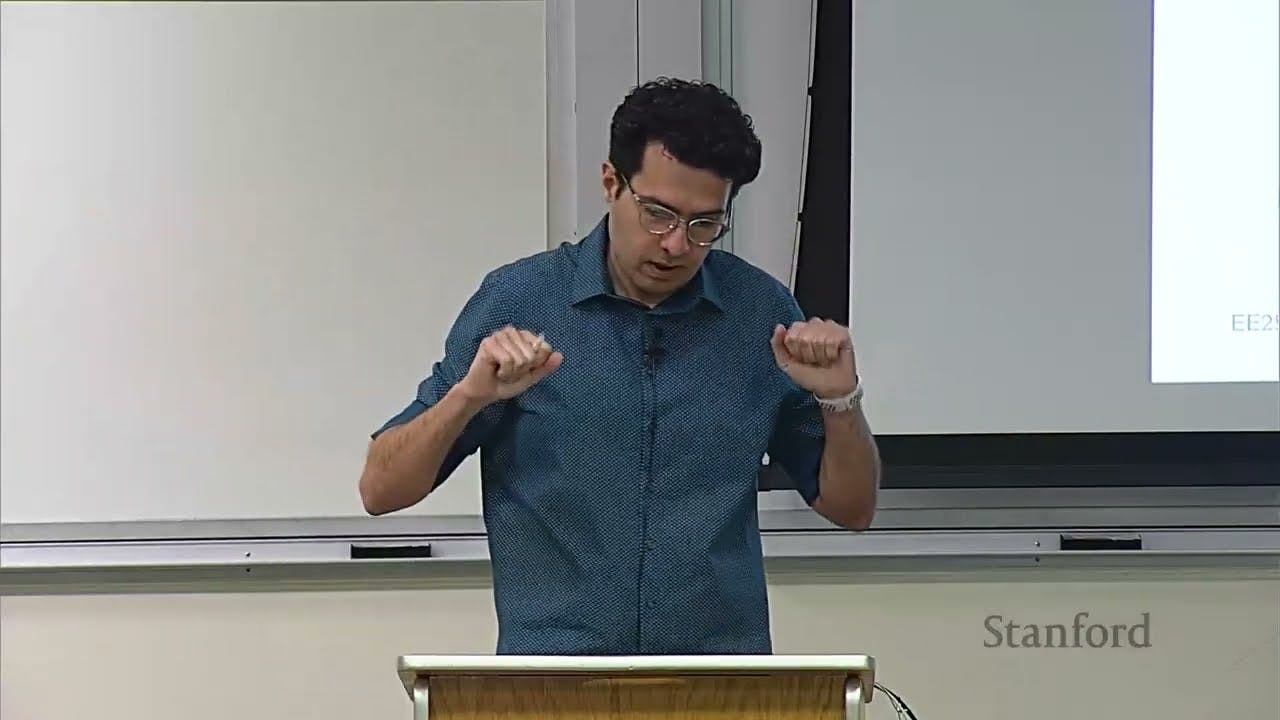Stanford EE259 I Camera principle of operation and architectures, image formation I 2023 I Lec. 19
04 Feb 2024 (almost 2 years ago)

Coherent Lidar
- Coherent lidar systems use a coherent optical receiver and can measure both range and velocity, while direct detection lidar can only measure range.
- Coherent lidar systems can be frequency modulated (FMCW) or phase modulated (PMCW).
- FMCW lidar uses triangular chip waveforms to address the large Doppler shifts.
- The coherent receiver extracts the conjugate multiplication of the transmitted and received signals.
- The range (R) can be calculated as c * Tau / 2, where c is the speed of light.
- The relative radial velocity can be calculated as -FD * Lambda / 2, where Lambda is the wavelength of the transmitted signal.
- PMCW lidar uses phase-modulated ranging codes instead of triangular waveforms.
- DSP for PMCW lidar is more complicated than FMCW lidar due to the presence of Doppler shift.
Flash and Scanning Lidars
- Flash lidar uses an array of photodiodes to capture a time-of-flight image, and the direction of arrival (DOA) is determined by the geometry of the pixels and optics.
- Scanning lidars, such as multi-beam spinning lidars and MEMS scanners, determine DOA based on the fixed elevation angles of the laser beams and the known rotation angle of the scanner.
- DOA estimation in lidar is generally simpler compared to radar and does not require significant DSP overhead.
Imaging
- Imaging is the process of capturing and recovering visual quantities from light.
- The history of photography dates back to the 1800s, with early techniques such as bitumen of Judea and the daguerreotype process.
- The daguerreotype process, invented by Louis Daguerre in 1839, produced high-quality images but required long exposure times and could not be easily reproduced.
- William Talbot's calotype process, developed around the same time, allowed for multiple prints from a master negative and eventually evolved into modern analog photography.
- The first digital camera was invented in 1975 at Kodak but was not commercialized until the 1990s.